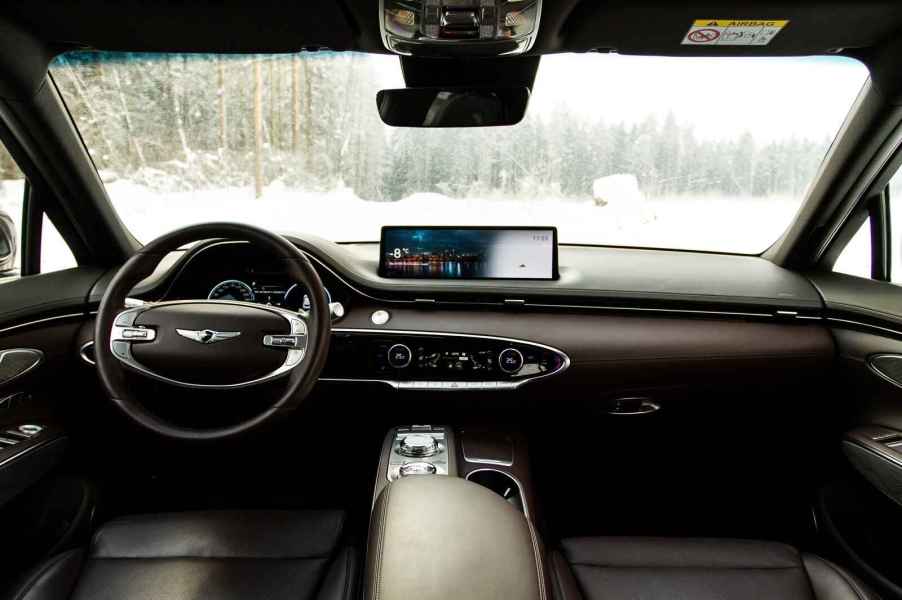
If you live in an area that experiences cold winter weather, chances are you have first-hand experience with vehicle issues out in the elements. While long cranks in the cold are nothing new, there are a ton of new technologies in vehicles that do struggle when the temperature gets below freezing. The majority of these cold weather performance issues seem to gravitate toward the onboard technology systems in these new vehicles, most notably the infotainment systems. Here is everything you need to know about why infotainment systems struggle so much in cold weather.
What part of the infotainment system freezes up?
According to AAA, the part of the infotainment system in your vehicle that freezes up when cold weather hits is the screen itself. Buttons in the dash and the microchips that make these entertainment systems are generally unaffected. However, these infotainment screens are often LCD screens, which become slow to respond in cold weather conditions.
In the past, vehicle entertainment systems were much more basic, with most systems consisting of a radio. This radio usually only had a few digits of LCD space available for information. These LCD screens also would freeze in the winter, but with these systems having so little information to show, they were usually ignored. Infotainment systems today take up much more space, making it obvious when they are frozen or laggy.
Why do LCD screens work poorly (or not at all) in the cold?
Focus LCDs explain that an LCD screen, which is commonly used in vehicle infotainment screens, contains liquid. These LCDs, or liquid crystal displays, contain a liquid that is housed between two layers of glass. These liquids make the crisp images found in new infotainment systems possible. When the temperature gets below freezing, just like any liquid, the LCD fluid freezes, making it unusable.
Luckily, this does not damage an LCD screen. To alleviate this laggy LCD screen, drivers just have to wait for the cabin of their vehicles to heat up. As the cabin heats up, the LCD infotainment screen should return to its crisp, clear, responsive self.

Other car parts are negatively affected by freezing temperatures
When it comes to other vehicle components getting negatively affected by freezing temperatures, there are several. The first and most obvious is the electrical system on a vehicle, consisting of the battery and the alternator. As with any electrical component, cold weather makes these electrical connections slower. Tires and wheels can also be affected, with emerging potholes and road wear damaging these components. Winter weather also thickens fluids in the engine, including transmission fluid, antifreeze, oil, and washer fluid. These components may be slow to work correctly in colder weather. Windshield wipers can also be affected, leading to wipers that are frozen on the windshield itself or windshield wiper motors that are strained from chipping up ice. If your area uses road salt, paint on your vehicle can also be affected, with road salt being very corrosive on the outside of your vehicle.
Sources: AAA, Focus LCDs





